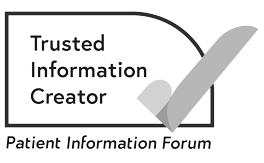Chemoradiation for anal cancer
Anal cancer chemoradiation
Chemoradiation is when you have chemotherapy and radiotherapy at the same time. It is sometimes called chemoradiotherapy. It is often the main treatment for anal cancer.
We have separate information on radiotherapy and chemotherapy for anal cancer, which includes detailed information about the individual treatments and their side effects.
Related pages
Why chemoradiation is given
Chemotherapy drugs can make cancer cells more sensitive to radiotherapy. This can help the radiotherapy to work better. Having both treatments often works better than having either treatment on its own.
Chemoradiation has a better chance of curing anal cancer than surgery. It also means you may avoid having a stoma.
How chemoradiation is given
You usually have chemoradiation as an outpatient. Most people have radiotherapy Monday to Friday for just over 5 weeks. Chemotherapy and radiotherapy start on the same day.
You usually have the chemotherapy drug mitomycin into a vein on the first day of your radiotherapy only. You then take capecitabine tablets 2 times a day on the days you have radiotherapy.
Some people have a drug called fluorouracil into a vein instead of capecitabine. You have it through a portable chemotherapy pump, which you take home. It is usually given continuously for a few days on week 1 and 5 of your radiotherapy.
Your doctor or nurse will tell you about the drugs you will have and how often when you have them.
Before chemoradiation for anal cancer
Before starting this treatment, you should have a blood test to check whether you have low levels of an enzyme called DPD. This is called DPD deficiency.
People who have low DPD levels can develop serious or life-threatening side effects if they have certain chemotherapy drugs. This includes fluorouracil and capecitabine. If you have DPD deficiency, this can affect the treatments that are available for you.
Side effects of chemoradiation for anal cancer
Having chemotherapy and radiotherapy together can make the side effects of treatment worse. Your cancer doctor or specialist nurse will give you more information about chemoradiation and the possible side effects.
Some of the common side effects are:
- tiredness (fatigue)
- diarrhoea
- sore skin in the area being treated.
Tell your doctor, specialist nurse or radiographer about your side effects. They can help you find ways to cope with them.
During chemoradiation you will usually have weekly blood tests to monitor the levels of your different blood cells.
Related pages
About our information
This information has been written, revised and edited by Macmillan Cancer Support’s Cancer Information Development team. It has been reviewed by expert medical and health professionals and people living with cancer.
-
References
Below is a sample of the sources used in our anal cancer information. If you would like more information about the sources we use, please contact us at informationproductionteam@macmillan.org.uk
S Rao, MG Guren, K Khan et al. Anal cancer: ESMO Clinical Practice Guidelines for diagnosis, treatment and follow-up. 2021. European Society of Medical Oncology. Available from: www.esmo.org/guidelines/guidelines-by-topic/esmo-clinical-practice-guidelines-gastrointestinal-cancers/anal-cancer [accessed January 2023].
O Dahl, MP Myklebust, JE Dale et al. Evaluation of the stage classification of anal cancer by the TNM 8th version versus the TNM 7th version. 2020. Acta Oncologica, 59(9), 1016–1023. Available from: www.tandfonline.com/doi/full/10.1080/0284186X.2020.1778180 [accessed December 2022].
Date reviewed

Our cancer information meets the PIF TICK quality mark.
This means it is easy to use, up-to-date and based on the latest evidence. Learn more about how we produce our information.
The language we use
We want everyone affected by cancer to feel our information is written for them.
We want our information to be as clear as possible. To do this, we try to:
- use plain English
- explain medical words
- use short sentences
- use illustrations to explain text
- structure the information clearly
- make sure important points are clear.
We use gender-inclusive language and talk to our readers as ‘you’ so that everyone feels included. Where clinically necessary we use the terms ‘men’ and ‘women’ or ‘male’ and ‘female’. For example, we do so when talking about parts of the body or mentioning statistics or research about who is affected.
You can read more about how we produce our information here.





